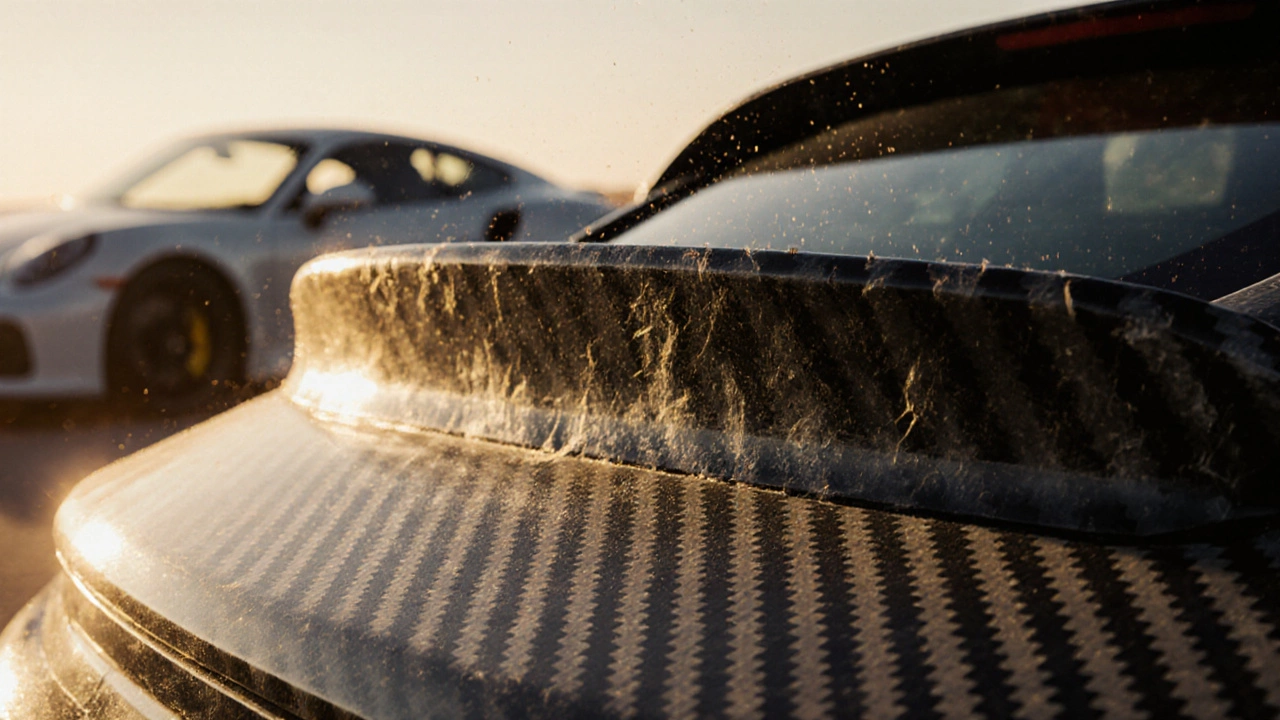When you put UV damage carbon fiber, the degradation of carbon fiber surfaces caused by prolonged exposure to ultraviolet light. It's not just about looks—it's about structural integrity and resale value. on your car, you’re not just adding style. You’re adding a high-performance material that’s meant to last. But left unprotected, the sun turns that sleek, glossy finish into a dull, cracked mess. This isn’t rare. It happens to cars parked outside, driven daily, or even stored in garages with windows. And most people don’t realize it’s happening until it’s too late.
The real problem? carbon fiber protection, the process of sealing and shielding carbon fiber from environmental threats like UV rays, moisture, and chemicals. Also known as clear coat maintenance, it’s not optional if you want your spoiler, hood, or diffuser to keep looking new. Most factory carbon fiber parts come with a clear coat, but it’s thin. And that coat? It breaks down under UV light like plastic left in a window. You’ll see yellowing, chalkiness, or tiny cracks—signs the protective layer is gone. Once that happens, the underlying weave starts absorbing moisture and dirt, which speeds up the damage. And no, wax won’t fix it. You need a proper UV-blocking sealant designed for composites.
And it’s not just about the material itself. carbon fiber fading, the visible loss of color and gloss on carbon fiber surfaces due to sun exposure and poor maintenance. Also known as surface degradation, it’s what makes your $2,000 carbon fiber kit look like a $200 knockoff after two years. This isn’t just cosmetic. Faded carbon fiber is more prone to micro-cracking, which can lead to delamination over time. That means the layers start peeling apart—something you can’t reverse without replacing the part. And replacement? That’s expensive. Far more than the cost of a good ceramic coating or UV protectant applied once a year.
What you’ll find below are real, tested ways to stop this from happening. No fluff. No marketing hype. Just what works: how to clean carbon fiber without scratching it, which sealants actually block UV rays (and which ones are just shiny plastic), how often to reapply protection, and how to spot early damage before it turns into a full-blown repair. You’ll also see how other owners handled similar issues—like using sun shades in parking lots, or switching from spray-on protectants to brush-on formulas that last longer. These aren’t theories. These are fixes people used on their own cars, backed by years of real-world use.
If you’ve ever looked at your carbon fiber parts and thought, "This used to look amazing," then you’re not alone. And you’re not out of options. The right steps can bring it back—or better yet, stop it from going downhill in the first place.

Carbon fiber spoilers look great but are vulnerable to UV rays, physical impacts, chemicals, and heat. Learn what really damages them and how to protect your investment with simple, proven steps.